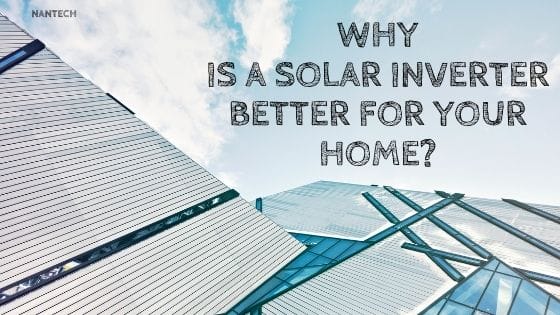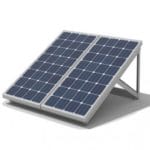- Home
- About us
- Products
- Dealer Enquiry
- Blog
- Contact Us
- Home
- About us
- Products
- Dealer Enquiry
- Contact Us
- 044 -2486 1994
- +91 99623 98222
- sales@nantech.in
- REQUEST A QUOTE

Today, fossil fuels and their by-products are being scrutinized by the world, and the focus is more on greener and environmentally friendly sources of energy. Solar Energy, mainly the use of Solar panels, has gained much traction in this field, It uses Solar Photovoltaic (PV) Cells to capture sunlight and convert that to electricity.
However one must remember that solar panels usually provide Direct Current (DC) energy. Most of our household electrical appliances use Alternating Current (AC) energy. Thus, we need to convert DC to AC, and this is where we use a solar inverter. This device converts the output current from the solar panels to AC energy, which can be used in your house.
Also Read: Aspects To Consider While Purchasing A Solar Inverter
Today, there are three types of Solar Inverter technologies that one can choose from:
In a PV system with a string inverter, the panels are wired together with 'strings,' Each panel's output can be sent back to the central inverter via this 'string.' This allows for a low-cost inverter operation and is durable and easy to maintain. These are best suited for houses with simple roofs that get sun throughout the day and for people looking for an economical and low-cost PV system.
 These are different from the string inverter system, and here, the solar panels each have a small inverter installed. Therefore, the conversion from DC to AC occurs right on the roof. The advantage of this system is that for systems that experience shading or have more complex designs, one can use this instead of a string system to mitigate the problems. Furthermore, it allows for panel-level monitoring since each microinverter is connected to the solar panels. These are usually high-cost, high-performance inverters, and hence one must use them for complicated roof constructions.
These are different from the string inverter system, and here, the solar panels each have a small inverter installed. Therefore, the conversion from DC to AC occurs right on the roof. The advantage of this system is that for systems that experience shading or have more complex designs, one can use this instead of a string system to mitigate the problems. Furthermore, it allows for panel-level monitoring since each microinverter is connected to the solar panels. These are usually high-cost, high-performance inverters, and hence one must use them for complicated roof constructions.
These fall in between microinverters and string inverters. These are interfaces located near (or on) the solar panels, which 'condition' the DC output and send it back to a centralized inverter. The advantage is that it helps monitor individual panels, mitigate the impact of shading, optimize the efficiency of inverters, and cost less than microinverters. These are best suited for houses or buildings with less ideal solar panel locations and whose owners are willing to pay a little extra for a better system but don't want microinverters.
Nantech Power Systems Pvt. Ltd provides the best inverters to buy in India, with its excellent product line-up, efficient services, and timely after-sales support. Check it out!
Thanks To UPS Manufacturers In Chennai Your Gadgets Are Safe!
Why Should Businesses Consider Solar Power Installations?
Can Inverters Save Electricity?
Why the UPS is the Heart of a Data Centre Power System!
Do You Need A Servo Voltage Stabiliser
Modular UPS Versus Conventional UPS: Differences Decoded
Uncovering the Game-Changing Benefits of Modular UPS Systems
Maximising Inverter Battery Performance: Key Factors to Consider
Role of UPS Systems in Critical Industries